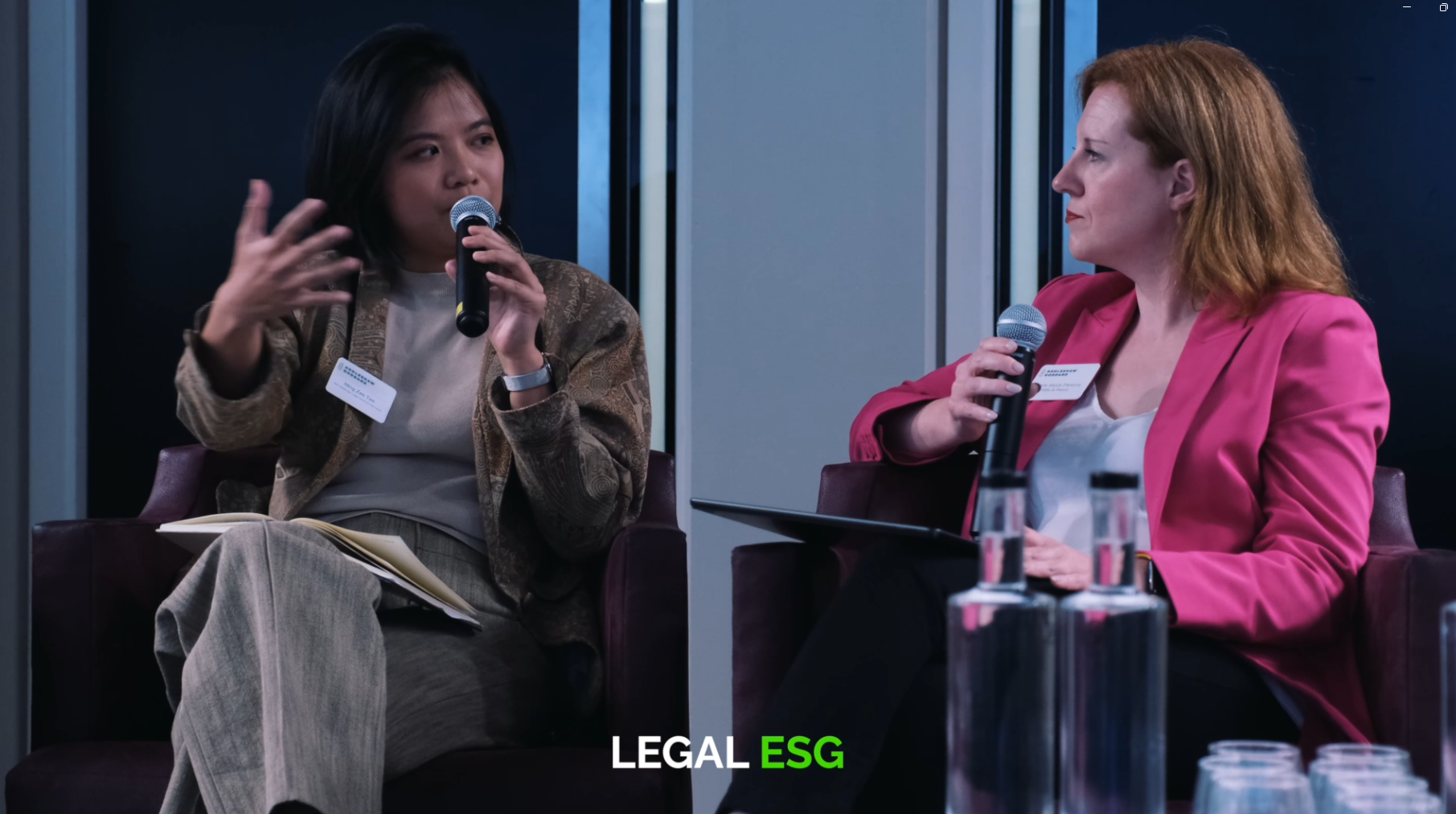November 7, 2025
AUTHOR Legal ESG
For the past several years, Environmental, Social, and Governance (ESG) criteria represented a clear, forward-moving consensus. That consensus has fractured.
We have entered "The ESG Reset" - a fundamental reframing of the landscape driven by a potent mix of political whiplash, volatile investor sentiment, and persistent geopolitical crises.

The rules are being rewritten in real time. Political shifts are rolling back federal regulations while "red" and "blue" states wage a proxy war through investment laws. Record outflows from ESG funds signal that investors are dropping the label, demanding tighter oversight. And global conflicts in Ukraine and the Middle East have exposed the extreme fragility of global supply chains, dragging energy security and human rights diligence back to the top of the agenda.
What worked for legal teams in 2023 is no longer sufficient. The era of aspirational reporting is over. The era of high-stakes risk, liability, and strategic resilience has begun.
1. What Has Changed: The Landscape of Regulatory and Geopolitical Shocks
The core challenge of 2025 is fragmentation. Instead of a single path, lawyers now face a minefield of conflicting demands.
- Regulatory Whiplash: In the U.S., a sharp federal pivot away from ESG mandates is colliding with aggressive state-level action. California is enforcing sweeping new climate disclosure rules that effectively set a de facto national standard, while states like Texas and Florida actively pass laws to punish firms for considering ESG factors.
- European Divergence: The EU, while still the global standard-bearer, is facing its own reality check. Key frameworks like the Corporate Sustainability Due Diligence Directive (CSDDD) and CSRD have seen delays, signaling concerns over reporting burdens and corporate readiness. This creates uncertainty, but the core compliance demands remain.
- Geopolitical Realities: Global crises are no longer abstract "S" or "G" factors. The war in Ukraine forced a harsh recalibration of energy policy, pitting green goals against energy security. And conflicts in the Middle East have redefined supply chain risk, proving that regional instability has immediate, global consequences.
2. Why This Matters for Lawyers: A New Frontier of Risk and Liability
This reset fundamentally changes the role of the legal department, moving it from a compliance backstop to a central strategic advisor.
- From Compliance to Strategic Advice: Clients are trapped. A multinational corporation may be legally required to report human rights diligence by the EU while being sued by a "red state" pension fund in the U.S. for the exact same policy. Lawyers are now the primary navigators of this "no-win" landscape, crafting compliance strategies that thread an impossibly small needle.
- Risk Management Reimagined: The "E" in ESG has been joined by a hard "G" for Geopolitics. Legal risk management now must include geopolitical expertise. Advising on a new factory or supply contract is no longer just a commercial question; it’s an assessment of supply chain resilience, "friend-shoring" viability, and exposure to conflict zones.
- Massive Liability Exposure: The new "L" in ESG is "Litigation." As regulators and plaintiffs intensify scrutiny of ESG claims, "greenwashing" liability is skyrocketing. Furthermore, the anti-ESG movement is weaponizing lawsuits to attack corporate diversity programs and climate commitments, exposing firms to legal challenges from all sides.
3. What to Action Heading into 2026: The Legal Team's New Playbook
As we look to 2026, legal leaders must shift from a reactive to a proactive posture. The focus must be on building durable, defensible systems.
- Action the Anti-ESG Backlash: This is no longer a fringe movement; it is a well-funded, coordinated legal and political strategy. Legal teams must proactively review and pressure-test all public-facing ESG, climate, and DEI commitments to ensure they are precise, defensible, and directly tied to long-term business value.
- Master Cross-Border Regulation: The conflict between U.S. pushback and EU mandates is the new normal. Lawyers must map their company's global footprint against this fragmented regulatory landscape, identifying the most stringent applicable standard (like California's or the EU's) and building a single, harmonized compliance system.
- Embed Supply Chain Diligence: The EU's CSDDD has set the new global benchmark for human rights and environmental diligence, even with delays. Legal must lead the operational effort to gain full transparency into supply chains, moving this from a "supplier code of conduct" to a fully integrated risk-management function.
- Hardwire Governance: The reset demands a shift from glossy reporting to robust governance. This means embedding ESG and geopolitical expertise directly into board-level risk committees. The lawyer's job is to build the internal mechanisms that prove the company is not just talking about these risks, but actively managing them.
How to Stride Ahead in the ESG Reset
The "ESG Reset" is not an end, but an evolution. It signals a maturation of the market -away from branding and toward the core drivers of Risk, Regulation, Responsibility, and Resilience.
This is a profound opportunity for legal leaders. By embracing this new complexity, lawyers can move beyond their traditional function to become the central architects of corporate resilience. The firms and legal departments that navigate this fragmented landscape won't just protect their clients from risk; they will seize a decisive opportunity to build more durable, valuable, and resilient organizations for the turbulent decade ahead.
Join the discussion
The ESG Reset: Risk, Regulation, Responsibility & Resiliency - This series of 4 90 minute roundtables taking place November 12th & 13th are designed to bring together Legal and ESG experts to explore and navigate this new ESG frontier.





